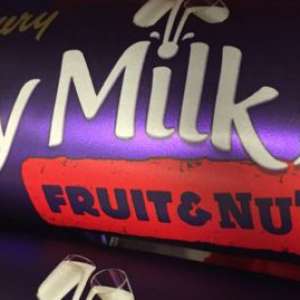
Decoding the Fruity Mystery: Exploring Cadbury's Fruit and Nut Bar Recipe Change
As a passionate chef and curious food enthusiast, I'm often asked intriguing questions by culinary students and fellow food lovers. Recently, a catering student in Bruges caught my attention with a query about Cadbury's decision to alter the recipe of their beloved Fruit and Nut bars. After delving into the subject and even discussing it on a BBC documentary, I've come to realize that there's more to this seemingly simple change than meets the eye.
The question at hand was, "Sultanas, currants, or raisins. What's the deal?" A valid inquiry indeed. Cadbury's decision to tweak their iconic Fruit and Nut bars didn't go unnoticed, prompting chocoholics to voice their concerns in the media. As I explored the reasons behind this change, I began to uncover an intriguing connection between the shift in recipe and broader trends in the food industry.
In my BBC documentary appearance for Rip Off Britain, I discussed the strategy that some bulk food manufacturers adopt to maintain competitive prices.As the price of cocoa continues to rise, these manufacturers often compensate by adding more inclusions such as fruits and nuts. But my exploration didn't stop there; it led me to an even more thought-provoking revelation.
Could the change in recipe, specifically the use of sultanas, be a strategic move to reduce the sugar content of the bars in response to government pressure and the "sugar tax"? It's a compelling theory that opens up a world of considerations about the intersection of health regulations, consumer demands, and the chocolate industry's response.
To truly understand the impact of this change, I decided to embark on a culinary journey to Waitrose, a well-known supermarket, to compare the three fruits: raisins, sultanas, and currants. Here's what I found:
Raisins: Raisins are the result of dried white Moscatel grapes.
They possess a dark and dense texture bursting with a sweet flavor. Unlike currants, raisins have the ability to soak up other flavors, making them a popular choice for infusing with alcoholic notes like Amaretto or brandy in cooking.
Major producers of Muscatel grapes include the USA, Turkey, Greece, and Australia.
Sultanas: Sultanas are also dried white grapes, typically derived from seedless varieties such as Thompson Seedless grapes. Known for their golden hue, sultanas are plumper, sweeter, and juicier than other raisins. They have a tendency to absorb flavors, making them ideal for soaking. Interestingly, sultanas might undergo a bleaching process to achieve their lighter color. Turkey stands out as the primary producer of sultanas.
Currants: Currants are made from dried Black Corinth grapes, often referred to as Zante grapes. The term "currant" traces back to the ancient city of Corinth, with other names like Zante currants or Corinth raisins. These dried fruits pack a flavorful punch, boasting a unique tanginess that sets them apart. They hail from the Black Corinth variety and can add a distinct character to culinary creations.
As we delve into the nutritional aspect, a significant contrast emerges:
Raisins contain per 30g serving: Energy 373kj, 88kcal, Fat 0.4 g, Saturates 0.2 g, Sugars 69.3 g, Salt 0.02
Sultanas contain per 30g serving: Energy 377kj, 89kcal, Fat 0.1 g, Saturates 0.0 g, Sugars 20.8 g, Salt trace
Currants contain per 30g serving: Energy 1220kj, 287kcal, Fat 0.4 g, Saturates 0.1 g, Sugars 67.7 g, Salt 0.04
*Prices were based on November 5th, 2015, at Waitrose.
While my exploration into the world of raisins, sultanas, and currants didn't unveil the exact reason behind Cadbury's recipe change, it shed light on the nuances that influence the decisions made in the chocolate industry.
From economic considerations to nutritional factors, every ingredient plays a role in the final product that graces our taste buds.
As chefs and food enthusiasts, we're always on the lookout for the stories behind our favorite dishes and treats. While we may not have all the answers, it's these culinary mysteries that keep our curiosity alive and our taste buds intrigued. So, the next time you bite into a Fruit and Nut bar, remember the intricate journey that each ingredient undertakes to create that perfect, delectable balance.
